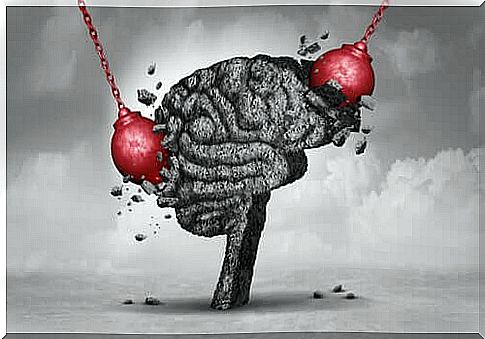What Happens To The Brain Before Death?

One of the great mysteries of humanity is knowing what happens to the brain before death. Although scientists around the world have tried to find the answer, the conclusions about what happens to our brains when we die are still unclear.
In 2018, scientists at Charité University in Berlin (Germany) and the University of Cincinnati (Ohio, USA) tried to find the answer to this question. They did this by trying to figure out what happens to the brain when its energy runs out and it stops getting blood.
They recorded electrode strips on patients who had suffered some kind of devastating brain injury, such as a stroke.
Thus, they obtained results that not only serve to clarify strokes, but also to provide a fundamental insight into the neurobiology of death.

the neurobiology of death
The brain is the organ in the body most vulnerable to hypoxia and ischemia. Hypoxia refers to the absence of oxygen from the blood that the specific organ receives.
Meanwhile, ischemia is defined as the stop or reduction of blood flow through the arteries in a certain area, which causes cell failure due to a lack of oxygen in the affected body part.
The brain cells showing greater susceptibility to ischemia and hypoxia are:
- Neocortical pyramidal neurons of layers III, IV, and V.
- CA1 pyramidal neurons of the hippocampus.
- The striatal neurons.
- Purkinje cerebellar neurons.
When blood circulation in the brain is interrupted, in less than ten minutes irreversible damage to these neurons develops. This occurs, for example, after a cardiorespiratory arrest.
What happens to the brain before death?
Until the study led by Jens Dreier, we only relied on assumptions from studies performed with electroencephalogram (EEG). Some of the notions that have been taken into account about these human studies are:
- Brain death occurs when the EEG is silenced.
- Neurons in the cerebral cortex can remain polarized for several minutes while “electrical silence” occurs.
the experiment
What the researchers in this study did was to analyze what happened in the pathophysiology of patients during sudden hypoxia-ischemia when life support treatments were withdrawn.
Patients underwent neuromonitoring with intracranial electrodes during intensive care. They had suffered:
- An aneurysmal subarachnoid hemorrhage (SAHH).
- A malignant hemispheric stroke (MHS).
- A traumatic brain injury.
Neuromonitoring was performed during the death process after complying with a no-resuscitation order.

Conclusions about the brain before death
In patients with acute brain injury, the experiment showed that persistent states of electrical silence in the cortex are induced, in many cases, by prolonged depolarization.
Prolonged depolarization is a wave of almost complete depolarization of neuronal and glial cells coupled with a response of vasoconstriction and vascular dilation. Occurs in:
- Migraines with aura.
- Subarachnoid hemorrhages.
- Intracerebral hemorrhages.
- Head injuries.
- Ischemic strokes.
A propagation pattern is produced by which prolonged depolarization can invade the tissue. Apparently, this depolarization is evident only with neuromonitoring performed using neuroimaging techniques.
In conclusion, scientists were able to determine that the human brain responds to acute cerebral ischemia with a specific pathological pattern. Certain types of neurons try to prevent the brain from dying by creating electrical imbalances between them.
When the brain fails to receive oxygen by disrupting blood reception, neurons try to accumulate the remaining resources. There is a “non-dispersed depression” followed by prolonged depolarization, also known as a “brain tsunami”.
In summary, the prolonged depolarization marks the beginning of toxic cellular changes that lead to death. However, it is not a death marker as such, as this depolarization can be reversed.
There is still a lot to investigate about this, so more research will be needed in the future.









